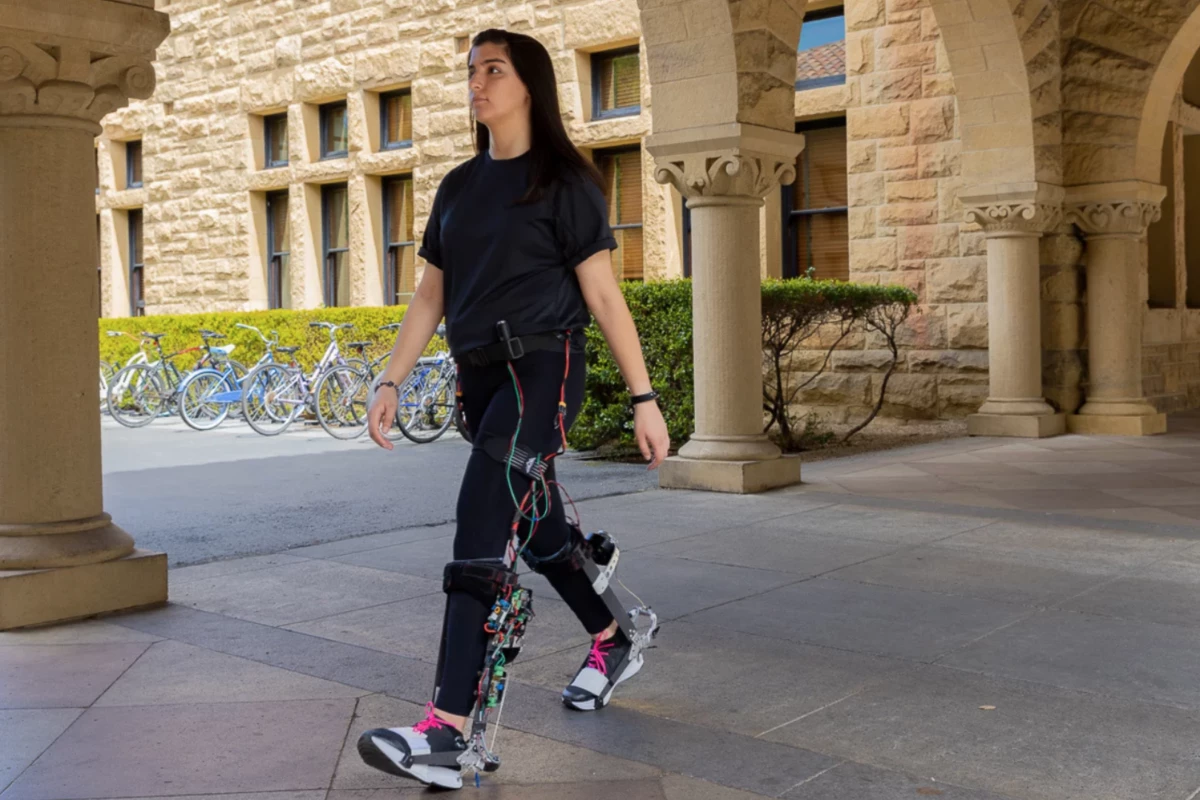With a view to one day helping people with impaired mobility, scientists at Stanford University have been toiling away on an ankle exoskeleton designed to make walking easier. The group has just introduced their first untethered version for use beyond the lab, which adjusts its level of assistance on the fly and offers a boost akin to taking off a 30-lb (13-kg) backpack.
We’ve looked at a couple of recent examples of these exoskeletons designed to offer assistance at the ankle joint. In research published last year, the team demonstrated a version of the device that could increase a wearer’s walking speed by around 40%. An earlier version was tuned for runners, with experiments demonstrating how it could boost speed by 10%.
These previous iterations of the ankle exoskeletons were emulators, meaning that they involved complicated laboratory setups with wires, treadmills and external motors. By hooking subjects up to these emulators, the researchers were able to gather motion data and rapidly test and fine-tune the systems to offer the optimal level of assistance based on gait and energy expenditure.
These emulators were invaluable for the team’s research and development, and allowed a high degree of individualization with assistance tailored to the subject. But they do have obvious limitations when it comes to the real-world potential of these exoskeletons, so an untethered version was always in the team’s cross hairs.
The new exoskeleton is a motorized boot that applies torque at the ankle, in doing so performing some of the function of the calf muscle, helping the user push off with each step. Cheap wearable sensors are built into the boot to monitor movement, using machine learning algorithms to adapt the level of assistance based on the way the person walks.
“We measure force and ankle motion through the wearables to provide accurate assistance,” said team member Patrick Slade. “By doing this, we can carefully control the device as people walk and assist them in a safe, unobtrusive way.”
The team says it takes about an hour of walking for the exoskeleton to become accustomed to the user, but once it does, it offers energy savings and a speed boost equivalent to dropping a 30-lb backpack.
“Optimized assistance allowed people to walk 9% faster with 17% less energy expended per distance traveled, compared to walking in normal shoes," said team leader Steve Collins. “These are the largest improvements in the speed and energy of economy walking of any exoskeleton to date. In direct comparisons on a treadmill, our exoskeleton provides about twice the reduction in effort of previous devices.”
The scientists consider the exoskeleton to be the first of its kind, and believe their goal of helping people with mobility impairments is drawing closer. They are now looking to test it out on older adults and disabled subjects, and are also working on versions that improve balance and joint pain.
“This is the first time we’ve seen an exoskeleton provide energy savings for real-world users,” said Slade. “I believe that over the next decade we’ll see these ideas of personalizing assistance and effective portable exoskeletons help many people overcome mobility challenges or maintain their ability to live active, independent, and meaningful lives.”
The research was published in the journal Nature, and the exoskeleton can be seen in action in the video below.
Source: Stanford University




